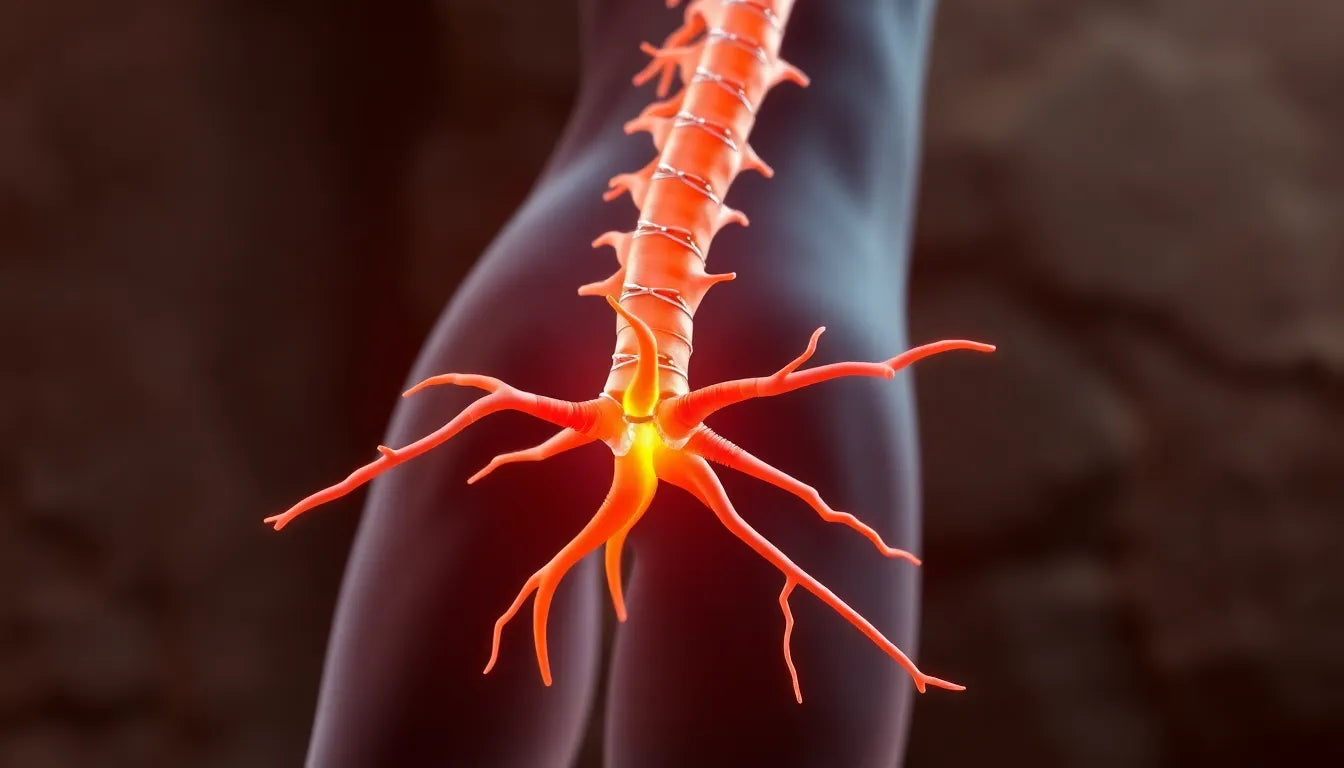Understanding the complexities of an early stage herniated disc is crucial for anyone experiencing back discomfort. A herniated disc, often referred to as a slipped or ruptured disc, occurs when the soft inner gel of a spinal disc pushes through a tear in its tougher exterior. This condition can lead to pain, numbness, or weakness, particularly when the herniated material irritates nearby nerves. Addressing a herniated disc in its early stages is vital to prevent further progression and to manage symptoms effectively.
Common concerns about early symptoms
When faced with the early symptoms of a herniated disc, many individuals find themselves overwhelmed with questions. Is this pain indicative of a more serious issue? What initial steps should be taken to alleviate discomfort? These concerns are common and highlight the need for both informational and therapeutic guidance. Understanding the symptoms and the available treatment options can empower individuals to make informed decisions about their health.
The goal of this post
This blog post aims to provide a comprehensive overview of early stage herniated disc symptoms and treatments. Readers can expect to gain insights into identifying symptoms, understanding the diagnostic process, and exploring both conventional and alternative treatment options. By equipping yourself with this knowledge, you can take proactive steps towards managing your condition and improving your quality of life. Stay tuned as we delve deeper into the specifics of symptoms, diagnosis, and effective treatment strategies in the following sections.
Recognizing early stage herniated disc symptoms
Understanding the symptoms of an early stage herniated disc is critical for timely intervention. The most common symptom is low back pain, often accompanied by sciatica, which is a sharp, radiating pain extending down the leg. This occurs when the herniated disc presses on the sciatic nerve. Additionally, individuals may experience numbness or tingling in the leg and foot, a result of nerve compression. Muscle weakness in the leg or foot can also occur, affecting mobility and balance. These symptoms can vary in intensity and may worsen with certain activities, such as bending or lifting.
Diagnosis process for early stage herniated disc
Diagnosing an early stage herniated disc involves a comprehensive approach. Initially, healthcare providers will conduct a detailed medical history review and physical examination to assess symptoms and identify potential nerve involvement. During the physical exam, doctors may check for muscle strength, reflexes, and sensory changes. If symptoms persist or worsen, imaging tests like MRI scans may be recommended to confirm the diagnosis and determine the extent of the herniation. However, immediate imaging is often unnecessary unless there are severe symptoms or concerns about other underlying conditions.
Exploring nonsurgical treatments
For many individuals, nonsurgical treatments can effectively manage early stage herniated disc symptoms. Conventional treatments typically begin with rest and the use of nonsteroidal anti-inflammatory drugs (NSAIDs) to reduce inflammation and alleviate pain. Physical therapy plays a crucial role, focusing on exercises that strengthen core and back muscles to support the spine and improve flexibility. These exercises can help relieve pressure on the affected nerve and prevent further injury.
Alternative therapies such as acupuncture and chiropractic care offer additional options for pain relief and symptom management. Acupuncture involves inserting thin needles into specific points on the body to stimulate nerves and reduce pain. Chiropractic care, which may include spinal manipulation, aims to improve spinal alignment and reduce nerve irritation. Hot and cold therapy can also be beneficial, with heat helping to relax muscles and cold reducing inflammation.
Understanding therapeutic injections
When nonsurgical treatments do not provide sufficient relief, therapeutic injections may be considered. Epidural steroid injections deliver anti-inflammatory medication directly to the area around the affected nerve, helping to reduce swelling and pain. Selective nerve root blocks (SNRBs) are another option, targeting specific nerves to diagnose and treat pain. These injections are typically recommended when conservative treatments have been exhausted and are used to provide temporary relief while other therapies are pursued.
The importance of medical and therapeutic evaluation
Consulting with healthcare professionals for a comprehensive evaluation is essential in managing an early stage herniated disc. A thorough assessment ensures that all potential causes of symptoms are considered and that the most appropriate treatment plan is developed. While conservative treatments are often effective, ongoing monitoring and adjustments may be necessary to address changes in symptoms or effectiveness of the treatment. By working closely with healthcare providers, individuals can optimize their management strategies and improve their overall quality of life.
Continuing with treatments and lifestyle adjustments
Managing early stage herniated disc symptoms often requires a combination of treatments and lifestyle modifications. Integrating ergonomic practices into daily routines can significantly alleviate discomfort and prevent further issues. Ensuring that workspaces are ergonomically designed, with chairs and desks that support proper posture, can reduce strain on the back. Additionally, incorporating regular exercise into your routine is crucial. Activities that enhance core strength and flexibility, such as yoga or Pilates, can support spinal health and prevent exacerbation of symptoms.
Posture correction is another essential aspect of managing a herniated disc. Being mindful of sitting and standing positions can help minimize unnecessary pressure on the spine. Simple adjustments, like using a lumbar support cushion or taking regular breaks to stretch during prolonged sitting, can make a significant difference.
Monitoring and follow-up care
Regular follow-ups with healthcare providers are vital in managing early stage herniated disc symptoms. These appointments allow for the monitoring of symptom progression and the effectiveness of treatment plans. It's important to recognize signs that may indicate the need for reevaluation or advanced treatments, such as persistent pain, increased numbness, or muscle weakness. By staying proactive and maintaining open communication with healthcare professionals, individuals can ensure that their treatment strategies remain effective and aligned with their health goals.
Frequently Asked Questions
What are the early signs of a herniated disc?
Early signs of a herniated disc include low back pain, often accompanied by sciatica, which is a sharp, radiating pain down the leg. Other symptoms may include numbness, tingling, or weakness in the leg or foot. These symptoms can vary in intensity and may worsen with specific activities such as bending or lifting.
How can I prevent a herniated disc from worsening?
To prevent a herniated disc from worsening, it's important to maintain a healthy lifestyle that includes regular exercise focused on strengthening the core and back muscles. Practicing good posture, using ergonomic furniture, and avoiding activities that strain the back can also help. Additionally, following a healthcare provider's recommendations for treatment and lifestyle modifications is crucial.
When should I see a doctor for a herniated disc?
It's advisable to see a doctor if you experience persistent back pain, numbness, or weakness in the leg or foot, especially if these symptoms interfere with daily activities. Immediate medical attention is necessary if you experience severe pain, loss of bladder or bowel control, or significant weakness, as these could indicate more serious conditions requiring urgent care.
Are there any long-term effects of a herniated disc?
While many people recover from a herniated disc with appropriate treatment, some may experience long-term effects such as chronic pain or ongoing weakness in the affected area. Managing these effects often involves a combination of physical therapy, lifestyle changes, and, in some cases, surgical intervention to prevent further damage and improve quality of life.
Can a herniated disc heal on its own?
A herniated disc can sometimes heal on its own over time, as the body's natural healing processes reduce inflammation and relieve pressure on the affected nerve. However, this process can take several weeks to months, and it's important to manage symptoms during this time with appropriate treatments and lifestyle adjustments. In cases where symptoms persist or worsen, medical intervention may be necessary.


















